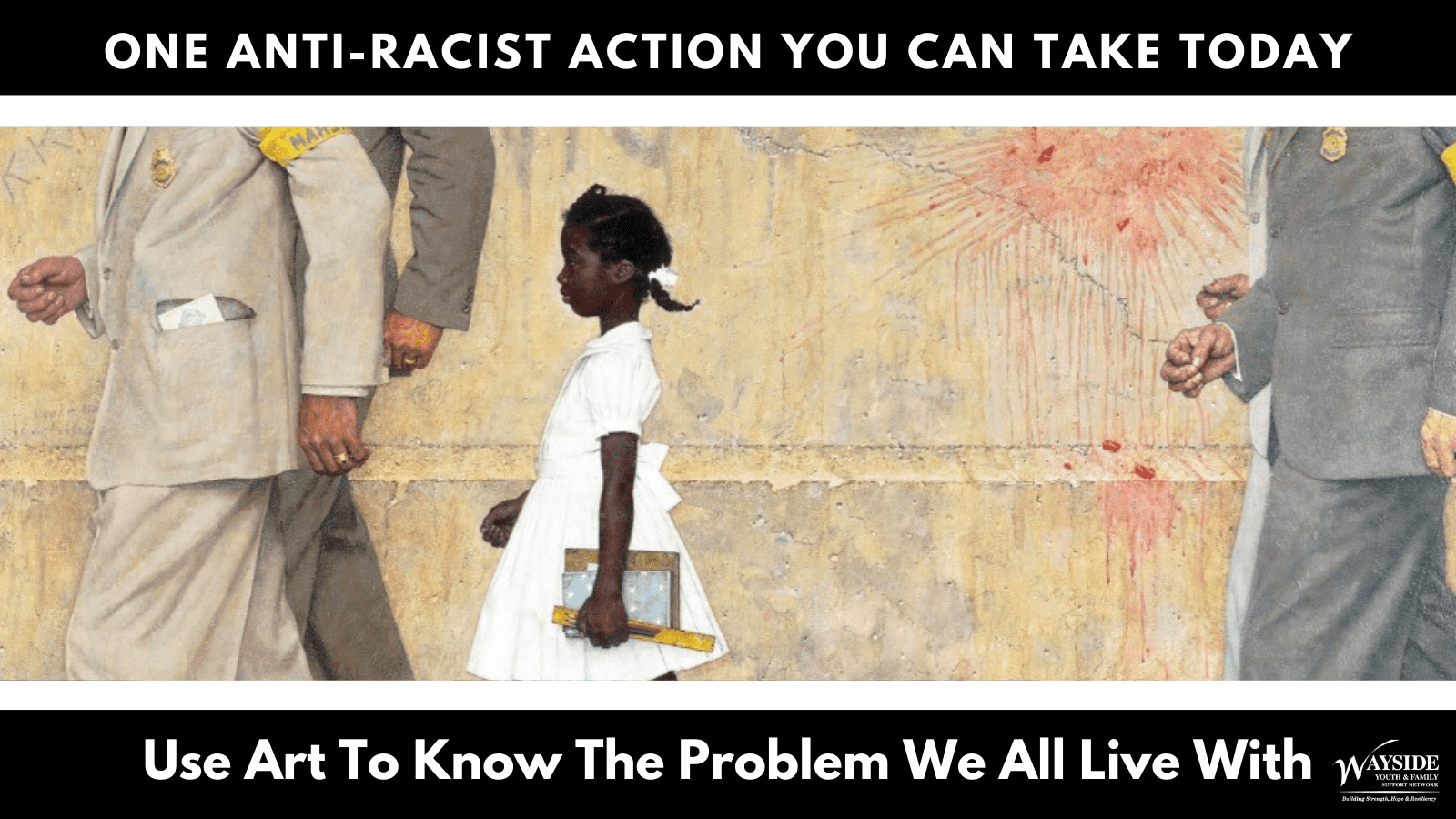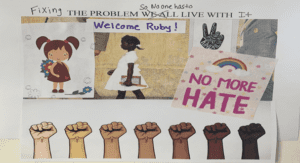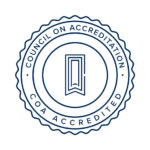One Anti-Racist Action You Can Take Today: Use Art To Know The Problem We All Live With

By Sara McCabe
Vice President of Campus Services
I remember being very young the first time my mom took me to the Norman Rockwell Museum in Stockbridge, Mass. It was 33 years ago, and I can still vividly remember staring at the painting of Ruby Bridges. I was conflicted, feeling both intrigued and confused. She was so beautiful in her white dress and proudly carrying her school supplies. What I didn’t understand was why there was a smashed tomato or what the word on the wall meant but even at a very young age, I knew something was wrong. My mother did not soften the story. She told me the truth. If Ruby Bridges was old enough to experience what she went through, my mom felt I was old enough to learn her story.
The Problem We All Live With remains one of my favorite pieces of art to this day. As a little girl, the meaning of the painting was hard for me to understand. I didn’t know it at the time but not understanding is the definition of white privilege. I’m grateful my mother had the courage to tell me the ugly truth behind this painting. It shaped my passion for social justice and activism.
I think art is a wonderful tool for teaching kids about racism, both historical and current. Showing children a piece of art, whether it be a painting, poem, or a song, is a great way to allow kids to describe what they feel from it. It opens the door for conversations that can be difficult to explain in just words. Art is also a great way for kids to express their understanding of the world around them.

It’s a natural instinct to want to protect children from scary things. It’s also a privilege to be able to do so. Using Art is a great way to tell a story. Creating art is a great way to process the feelings about the story.
My 8-year-old daughter and I recently honored Black History Month and Ruby Bridges by creating a new piece of art. I told her the truth behind the painting just like my mother had done for me. She sat with this information and after a bit of time passed, she had an idea. She re-created The Problem We All Live With to show what she would have done for Ruby on her first day of school. She calls it: Fixing the Problem, So No One Else Has to Live With It.

